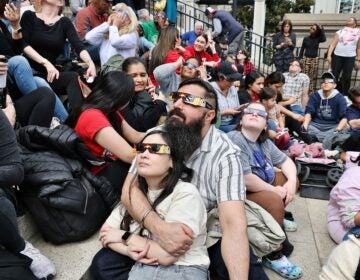Older than Dirt
Listen 08:34
Stardust discovered in a meteorite that landed in Australia more than 50 years ago is up to three billion years older than our solar system.
These remnants are left over from ancient stars that populated this region of the galaxy prior to the birth of our sun, some 4.5 billion years ago.
These particles got swept up in planet formation and/or hitched a ride to Earth on asteroids that have been in circulation ever since.
Dating was determined from an element, Neon-21, which is derivative of cosmic ray-bombarded silicon carbide.
Higher proportion of Neon-21 indicates the silicon carbide was drifting in space for a very long time before being embedded in a hunk of our solar system’s detritus left over after the solar system formed. The discovery may yield new insight into star formation in the Milky Way.
Turning to the night sky – Mars, Jupiter, and Saturn are still aligned in the 6:00 am predawn sky in the east.
They’re sliding closer together over the next few weeks.
Venus till dominates the southwest evening sky and will be joined by a thin waxing crescent moon on Wednesday.
Darker skies where you are? Tonight and tomorrow night, between 7:00 pm and 8:00 pm, try looking for the Andromeda galaxy with your binoculars halfway up above the horizon in the just north of west. It will resemble a faint smudge of softly glowing sky.
WHYY is your source for fact-based, in-depth journalism and information. As a nonprofit organization, we rely on financial support from readers like you. Please give today.




